Kyphoplasty is a minimally invasive treatment for vertebral compression fractures that typically occur at the junction between the thoracic spine (the part from which the ribs originate) and the lumbar (low back) spine. These fractures are more likely to occur in patients with osteoporosis.
These fractures can change the alignment of the spine so that the muscles that help to hold a person upright, with the center of gravity over the hips, gets moved forward. To compensate for this deformity, if and when it occurs, the other segments have to extend further, and these muscles get fatigued, and these changes can be a source of pain on a chronic basis.
A Potential Minimally Invasive Surgical Treatment Option:
A procedure designed to help correct these issues is called Kyphoplasty.
This procedure involves inserting a needle into the broken bone, through the needle, inserting and inflating a balloon. Bone cement, which is like a doughy glue that hardens in about 15 minutes, is introduced into the fracture space after deflating the balloon. By doing this procedure, several goals are achieved:
–the compression deformity can be corrected, although usually not 100%,
–the fracture is stabilized with significant pain relief.
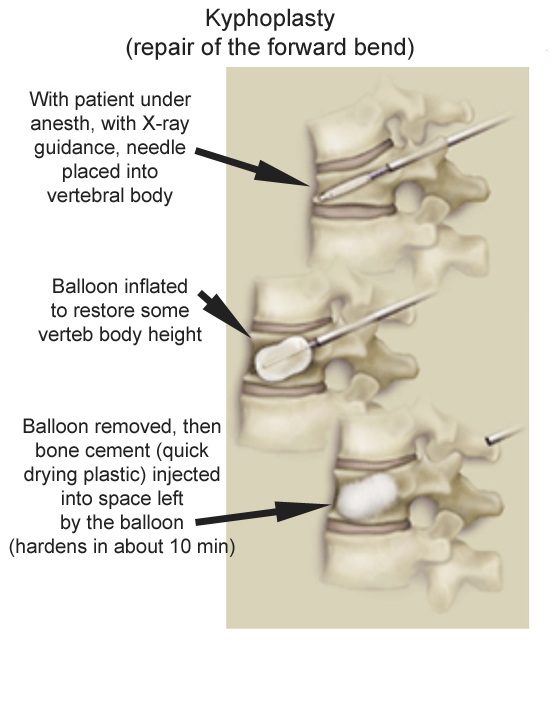
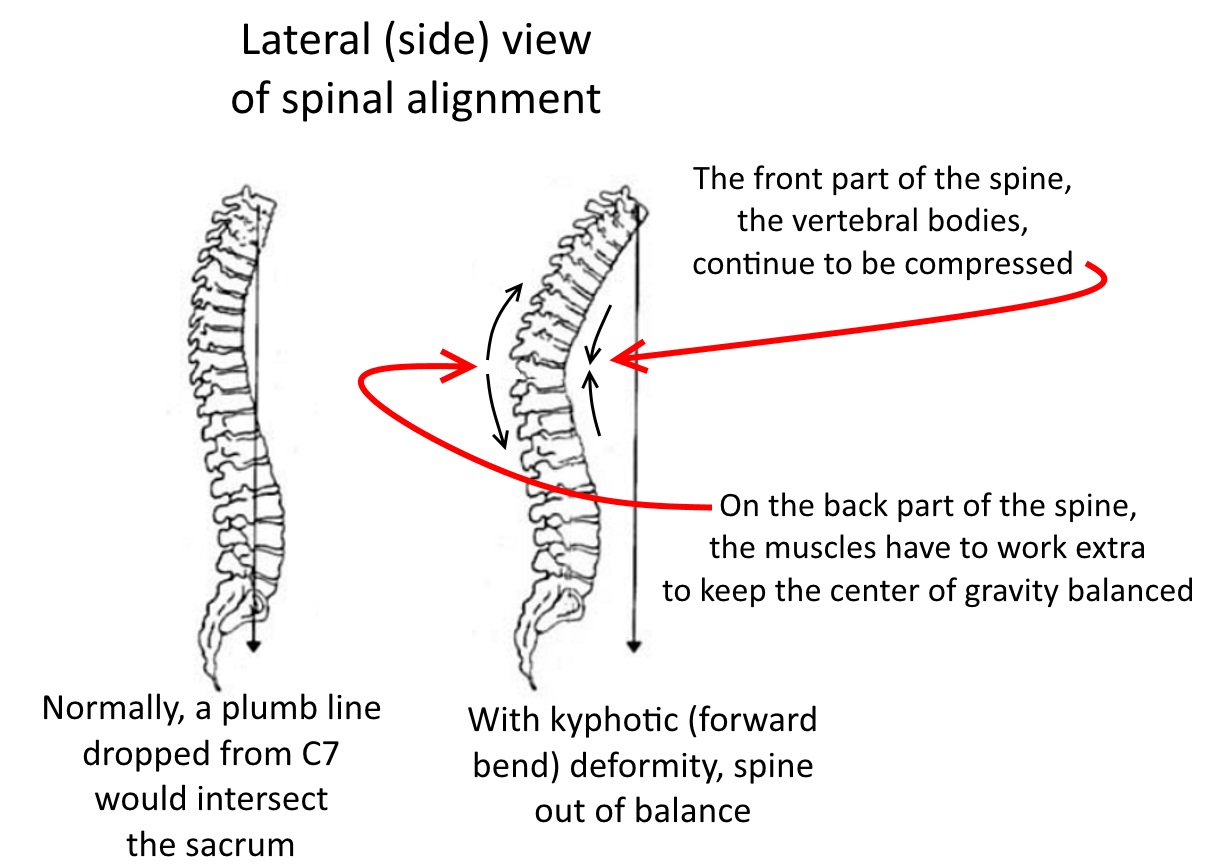
An example from a patient with a metabolic bone disease is shown below.
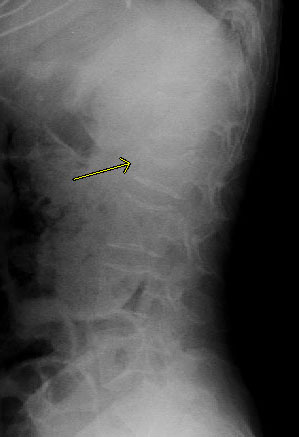
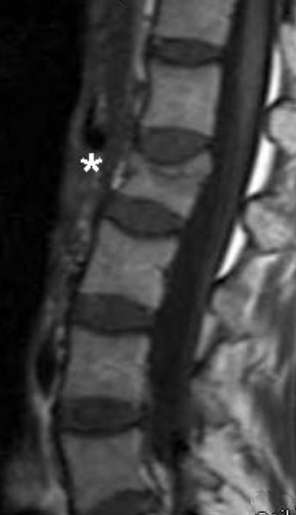
Intraoperative fluoroscopic views show the balloons inflated in the bone helping to restore the height of the vertebral body.
The inflation of the balloon also functions to compress some bone around the balloon to prevent the bone cement from being inadvertently injected into the wrong place.
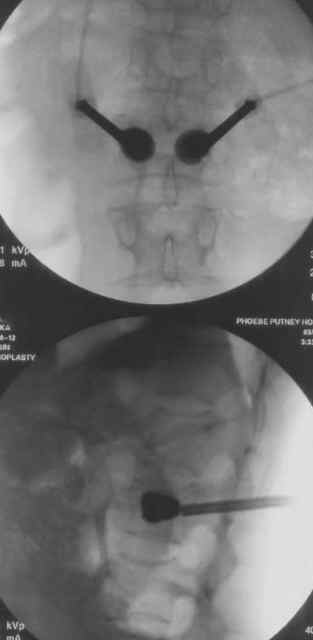
Post operative views are shown here with the bone cement in place. The patient felt better the night of surgery. The view from the front is shown on the left, and the side view is on the right. Note how the neighboring bones don’t look very white, indicating the lack of calcium contributing to the weakness of the bones.
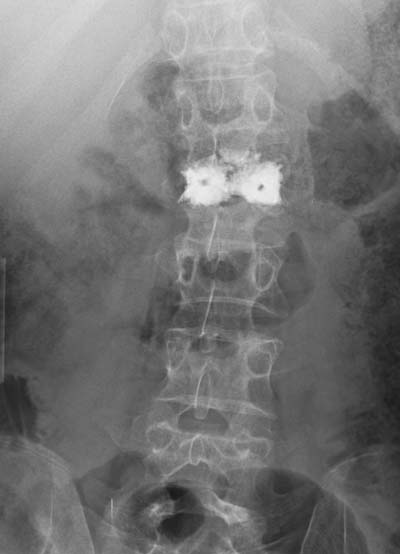
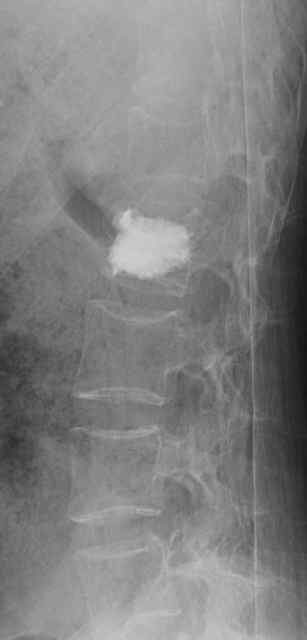
While the same risks occur as they do with any surgery (click here for risk information), the main risk with this procedure is that a neighboring or adjacent level will have another fracture. Since this condition usually occurs in patients with weak bones, and since the bone cement is often harder than normal bone, patients must understand that fracture of the next level is an event that can occur, but hopefully can be avoided.
On the whole, however, Kyphoplasty is generally a procedure with high patient satisfaction. Further information can be obtained at kyphon.com.
